Monthly Updates on Recent Books in the History of Christianity
To raise awareness of recent books in the history of Christianity, the editorial staff of Church History: Studies in Christianity and Culture highlights each month a list of 10-15 books in diverse periods and geographical regions that we hope will be of interest to our members. We include here below the twelfth monthly list, chosen by our staff, with excerpts from the publishers’ blurbs.
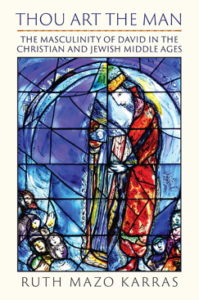
Ruth Mazo Karras, Thou Art the Man: The Masculinity of David in the Christian and Jewish Middle Ages. 2021
University of Pennsylvania Press
"How do we approach the study of masculinity in the past?" Ruth Mazo Karras asks. Medieval documents that have come down to us tell a great deal about the things that men did, but not enough about what they did specifically as men, or what these practices meant to them in terms of masculinity. Yet no less than in our own time, masculinity was a complicated construct in the Middle Ages.
In Thou Art the Man, Karras focuses on one figure, King David, who was important in both Christian and Jewish medieval cultures, to show how he epitomized many and sometimes contradictory aspects of masculine identity. For late medieval Christians, he was one of the Nine Worthies, held up as a model of valor and virtue; for medieval Jews, he was the paradigmatic king, not just a remnant of the past, but part of a living heritage. In both traditions he was warrior, lover, and friend, founder of a dynasty and a sacred poet. But how could an exemplar of virtue also be a murderer and adulterer? How could a physical weakling be a great warrior? How could someone whose claim to the throne was not dynastic be a key symbol of the importance of dynasty? And how could someone who dances with slaves be noble?
Exploring the different configurations of David in biblical and Talmudic commentaries, in Latin, Hebrew, and vernacular literatures across Europe, in liturgy, and in the visual arts, Thou Art the Man offers a rich case study of how ideas and ideals of masculinity could bend to support a variety of purposes within and across medieval cultures.
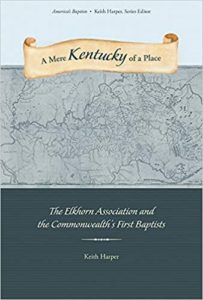
Keith Harper, A Mere Kentucky of a Place: The Elkhorn Association and the Commonwealth’s First Baptists. 2021
As the story goes, an itinerant preacher once visited the Bluegrass region and proclaimed heaven to be “a mere Kentucky of a place.” The Commonwealth’s first Baptists certainly thought so as they began settling the region a decade before statehood. By 1785 a group of pioneering preachers formed the Elkhorn Association, widely regarded as the oldest Baptist association west of the Alleghenies. Often portrayed in the historiography as the vanguard of a new frontier democracy, the Elkhorn Association, on closer inspection, reveals itself to be far more complex. In A Mere Kentucky of a Place, Keith Harper argues that the association’s Baptist ministers were neither full-fledged frontier egalitarians nor radical religionists but simply a people in transition. These ministers formed their identities in the crucible of the early national period, challenged by competing impulses, including their religious convictions, Jeffersonian Republicanism, and a rigid honor code—with mixed results.
With a keen eye for human interest, Harper brings familiar historical figures such as John Gano and Elijah Craig to life as he analyzes leadership in the Elkhorn Association during the early republic. Mining the wealth of documents left by the association, Harper details the self-aware struggle of these leaders to achieve economic wealth, status, and full social and cultural acceptance, demonstrating that the Elkhorn Association holds a unique place in the story of Baptists in the “New Eden” of Kentucky.

Kriston R. Rennie, The Destruction and Recovery of Monte Cassino, 529-1964. 2021
Between the sixth and twentieth centuries, the Benedictine Abbey of Monte Cassino (est. 529) experienced a cycle of atrocities which forever transformed its identity. This book examines how such a tumultuous history has been constructed, remembered, and represented from the Middle Ages to the present day. It uses this singular and pivotal case to analyze the historical process of remembering and its impact on modern representations of the past. Exactly how Monte Cassino is remembered is distinctive and diagnostic. The abbey is recognizable today as a beacon of western civilization, culture, and learning precisely because of its 'destruction tradition' over fourteen centuries. This book asks how the abbey's fragmented past has been ideologically, politically, and culturally constituted and preserved; how its experience with destruction and suffering - and recovery and rebirth - has become incorporated into a modern narrative of progress and triumph.
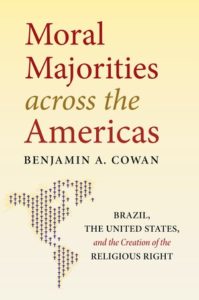
Benjamin A. Cowan, Moral Majorities across the Americas: Brazil, The United States, and the Creation of the Religious Right. 2021
University of North Carolina Press
This new history of the Christian right does not stop at national or religious boundaries. Benjamin A. Cowan chronicles the advent of a hemispheric religious movement whose current power and influence make headlines and generate no small amount of shock in Brazil and the United States. These two countries, Cowan argues, played host to the principal activists and institutions who collaboratively fashioned the ascendant religious conservatism of the late twentieth century. Cowan not only unearths the deep historical connections between Brazilian and U.S. religious conservatives but also proves just how essential Brazilian thinkers, activists, and institutions were to engendering right-wing political power in the Americas.
Cowan shows that both Protestant and Catholic religious warriors began to commune in the 1930s around a passionate aversion to mainstream ecumenicalism and moderate political ideas. Brazilian intellectuals, politicians, religious leaders, and captains of industry worked with partners at home and in the United States to build a united right. Together, activists engaged in a series of reactionary theological discussions. Their transnational, transdenominational platform fostered a sense of common cause and allowed them to develop a series of strategies that pushed once marginal ideas to the center of public discourse, reshaped religious demographics, and effected a rightward shift in politics across two continents.
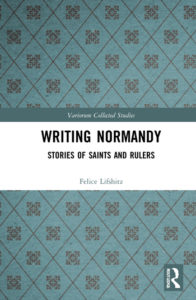
Felice Lifshitz, Writing Normandy: Stories of Saints and Rulers. 2021
Writing Normandy brings together eighteen articles by historian Felice Lifshitz, some of which are published here for the first time.
The articles examine the various ways in which local and regional narratives about the past were created and revised in Normandy during the central Middle Ages. These narratives are analyzed through a combination of both cultural studies and manuscript studies in order to assess how they functioned, who they benefitted, and the various contexts in which they were transmitted. The essays pay particular attention to the narratives built around venerated saints and secular rulers, and in doing so bring together narratives that have traditionally been discussed separately by scholars.
The book will appeal to scholars and students of cultural history and medieval history, as well as those interested in manuscript studies.
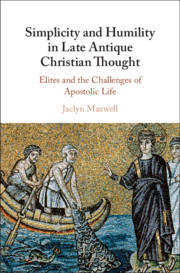
Jaclyn Maxwell, Simplicity and Humility in Late Antique Christian Thought: Elites and the Challenges of the Apostolic Life. 2021
The social values of upper-class Christians in Late Antiquity often contrasted with the modest backgrounds of their religion's founders – the apostles – and the virtues they exemplified. Drawing on examples from the Cappadocian Fathers, John Chrysostom, and other late antique authors, this book examines attitudes toward the apostles' status as manual workers and their virtues of simplicity and humility. Due to the strong connection between these traits and low socioeconomic status, late antique bishops often allowed their own high standing to influence how they understood these matters. The virtues of simplicity and humility had been a natural fit for tentmakers and fishermen, but posed a significant challenge to Christians born into the elite and trained in prestigious schools. This volume examines the socioeconomic implications of Christianity in the Roman Empire by considering how the first wave of powerful, upper-class church leaders interpreted the socially radical elements of their religion.
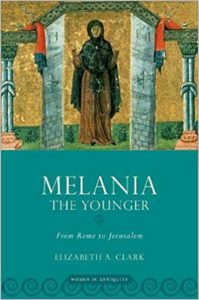
Elizabeth A. Clark, Melania the Younger: From Rome to Jerusalem. 2021
Melania the Younger: From Rome to Jerusalem explores the richly detailed story of Melania, an early fifth-century Roman Christian aristocrat who renounced her staggering wealth to lead a life of ascetic renunciation. Hers is a tale of "riches to rags."
Born to high Roman aristocracy in the late fourth century, Melania encountered numerous difficulties posed by family members, Roman officials, and historical circumstances in disposing of her wealth, property (spread across at least eight Roman provinces), and thousands of slaves. Leaving Rome with her entourage a few years before Alaric the Goth's sack of Rome in 410, she journeyed to Sicily, then to North Africa, finally settling in Jerusalem-all while founding monasteries along the way. Towards the end of her life, she traveled to Constantinople (present-day Istanbul) in an attempt to convert to Christianity her still-pagan uncle, who was on a state mission to the eastern Roman court.
Throughout her life, she was accustomed to meet and be assisted by emperors and empresses, bishops, and other high dignitaries. Embracing a fairly extreme asceticism, Melania died in Jerusalem in 439. A new English translation of her Life, composed by a long-time assistant who succeeded her in the direction of the male and female monasteries in Jerusalem, accompanies this biographical study.
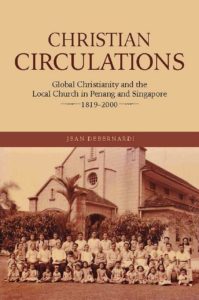
Jean DeBernardi, Christian Circulations: Global Christianity and the Local Church in Penang and Singapore, 1819-2000. 2020
National University of Singapore Press
In postcolonial Singapore and Malaysia, Pentecostal megachurches dominate the Christian landscape, but the "big four" Protestant churches—Anglican, Methodist, Presbyterian, and Brethren—remain religions of heritage for many. Sixty Malaysian and nineteen Singaporean assemblies identify themselves as Christian Brethren, and most trace their roots to independent local churches formed in Penang and Singapore in the 1860s. After World War II, the Brethren promoted new forms of evangelical practice, and former Brethren elders founded independent churches, from charismatic local churches to Pentecostal megachurches. This study is a transregional history of the Brethren movement and its emplacement in Singapore and Malaysia, and it is also a history of discontinuous continuities that have shaped the modern field of religious practice in China and Southeast Asia.
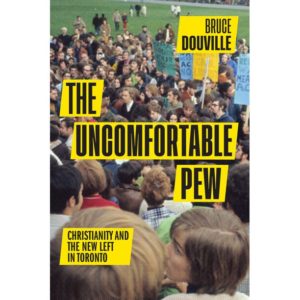
Bruce Douville, The Uncomfortable Pew: Christianity and the New Left in Toronto. 2021
McGill-Queen’s University Press
In The Uncomfortable Pew, Bruce Douville explores the relationship between Christianity and the New Left in English Canada from 1959 to 1975. Focusing primarily on Toronto, he examines the impact that left-wing student radicalism had on Canada's largest Christian denominations, and the role that Christianity played in shaping Canada’s New Left. Based on extensive archival research and oral interviews, this study reconstructs the social and intellectual worlds of young radicals who saw themselves as part of both the church and the revolution.
Douville looks at major communities of faith and action, including the Student Christian Movement, Kairos, and the Latin American Working Group, and explains what made these and other groups effective incubators for left-wing student activism. He also sheds light on Canada's Roman Catholic, Anglican, and United churches and the ways that progressive older Christians engaged with radical youth and the issues that concerned them, including the Vietnam War, anti-imperialism around the globe, women’s liberation, and gay liberation. Challenging the idea that the New Left was atheistic and secular, The Uncomfortable Pew reveals that many young activists began their careers in student Christian organizations, and these religious and social movements deeply influenced each other. While the era was one of crisis and decline for leading Canadian churches, Douville shows how Christianity retained an important measure of influence during a period of radical social change.
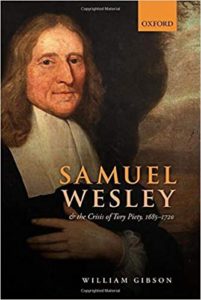
William Gibson, Samuel Wesley and the Crisis of Tory Piety, 1685-1720. 2021
Samuel Wesley and the Crisis of Tory Piety, 1685-1720 uses the experiences of Samuel Wesley (1662-1735) to examine what life was like in the Church of England for Tory High Church clergy. These clergy felt alienated from the religious and political settlement of 1689 and found themselves facing the growth of religious toleration. They often linked this to a rise in immorality and a sense of the decline in religious values.
Samuel Wesley's life saw a series of crises including his decision to leave Dissent and conform to the Church of England, his imprisonment for debt in 1705, his shortcomings as a priest, disagreements with his bishop, his marriage breakdown and the haunting of his rectory by a ghost or poltergeist. Wesley was also a leading member of the Convocation of the Church during the crisis years of 1710-14. In each of these episodes, Wesley's Toryism and High Church principles played a key role in his actions. They also show that the years between 1685 and 1720 were part of a 'long Glorious Revolution' which was not confined to 1688-9. This 'long Revolution' was experienced by Tory High Church clergy as a series of turning points in which the Whig forces strengthened their control of politics and the Church. Using newly discovered sources, and providing fresh insights into the life and work of Samuel Wesley, William Gibson explores the world of the Tory High Church clergy in the period 1685-1720.
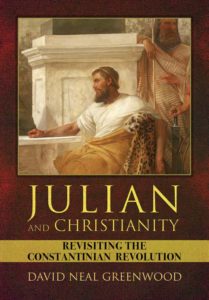
David Neal Greenwood, Julian and Christianity: Revisiting the Constantinian Revolution. 2021
The Roman emperor Julian is a figure of ongoing interest and the subject of David Neal Greenwood's Julian and Christianity. This unique examination of Julian as the last pagan emperor and anti-Christian polemicist revolves around his drive and status as a ruler. Greenwood adeptly outlines the dramatic impact of Julian's short-lived regime on the course of history, with a particular emphasis on his relationship with Christianity.
Julian has experienced a wide-ranging reception throughout history, shaped by both adulation and vitriol, along with controversies and rumors that question his sanity and passive ruling. His connections to Christianity, however, are rooted in his regime's open hostility, which Greenwood shows is outlined explicitly in Oration 7: To the Cynic Heracleios. Greenwood's close reading of Oration 7 highlights not only Julian's extensive anti-Christian religious program and decided rejection of Christianity but also his brilliant, calculated use of that same religion. As Greenwood emphasizes in Julian and Christianity, these attributes were inextricably tied to Julian's relationship with Christianity—and how he appropriated certain theological elements from the religion for his own religious framework, from texts to deities.
Through his nuanced, detailed readings of Julian's writings, Greenwood brings together ancient history, Neoplatonist philosophy, and patristic theology to create an exceptional and thoughtful biography of the great Roman leader. As a result, Julian and Christianity is a deeply immersive look at Julian's life, one that considers his multifaceted rule and the deliberate maneuvers he made on behalf of political ascendancy.
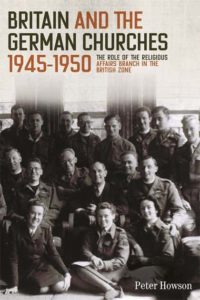
Peter Howson, Britain and the German Churches, 1945-1950: The Role of the Religious Affairs Branch in the British Zone. 2021
It is well known that at the key allied conferences during the latter part of World War II the future victorious allies were already progressing their post-war planning. Duly, an Allied Control Commission, with the task of providing administrative functions and eventually handing them over to an elected government, was formed in post-war Germany. In the Western zones, the cornerstone of coordinated administration was a policy of denazification, demilitarisation and democratization. Almost all sectors of German life would thereafter to be administered by the Allies.
German Churches and religious affairs had, however, been promised to the defeated Germany. Of course, Nazism hadn't spared the Christian churches, and so questions of denazification and the future relationship between church and state in Germany remained significant. This book examines the British approach towards post-war German religious and ecclesiastical life by highlighting the role of the British Element of the Control Commission, more specifically the Religious Affairs Branch that was separated from the Education Branch at the end of 1945. Considering British attitudes to Catholics and Protestants, as well as the remaining Jewish and Muslim communities in Germany, this book uncovers allied differences with regards to organising future religious life in Germany.
Finally, for staying up-to-date on the latest titles in all fields, we recommend regularly perusing New Books Network and its "New Books in Christian Studies” page. These pages are updated regularly.
